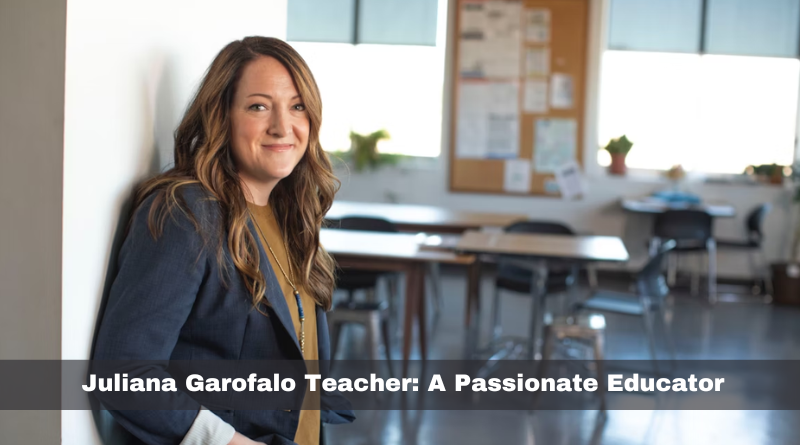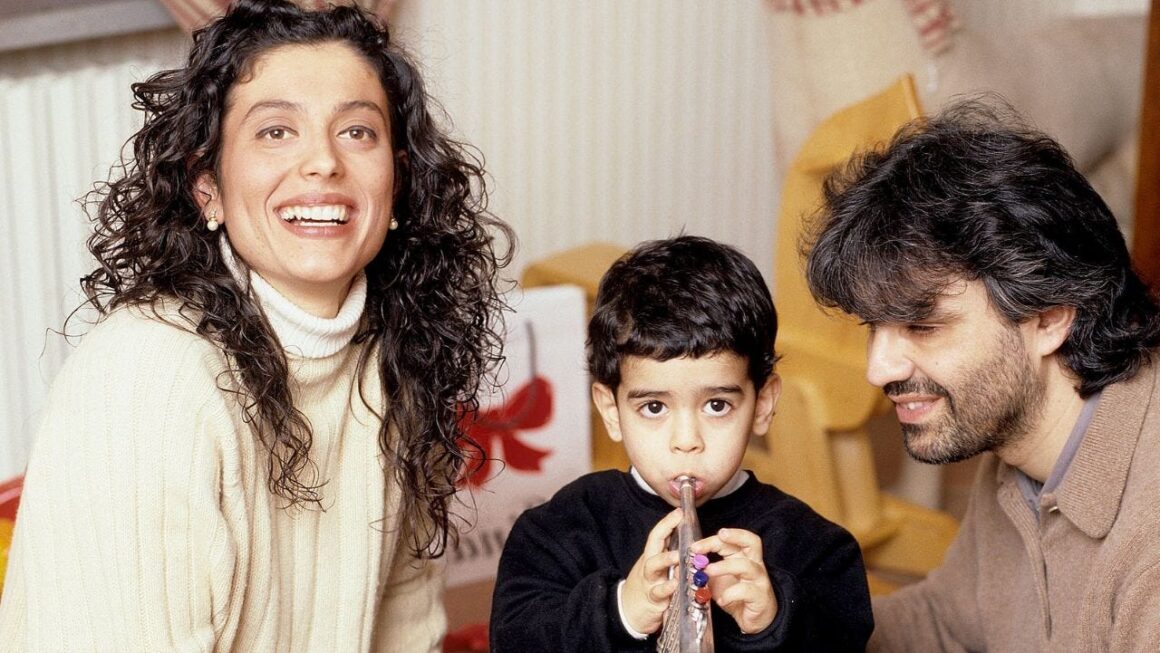Introduction
juliana garofalo teacher In the ever-evolving world of education, innovative teaching methods play a pivotal role in enhancing student engagement and learning outcomes. One educator who has made significant strides in this realm is Juliana Garofalo. Known for her creative and effective teaching strategies, Garofalo has become a beacon of modern education. This article explores her background, innovative methods, success stories, and practical advice for implementing her techniques in your own classroom.
1. Who is Juliana Garofalo?
Background and Education
Juliana Garofalo’s journey in education is marked by a deep commitment to both learning and teaching. She began her academic career with a solid foundation in educational theory and practice, earning degrees from prestigious institutions. Her educational background includes a Bachelor’s degree in Education and a Master’s in Curriculum Development, which provided her with a comprehensive understanding of pedagogical principles and instructional design.
Garofalo’s early experiences in teaching laid the groundwork for her future innovations. She started her career in diverse educational settings, gaining valuable insights into the challenges and opportunities present in different classroom environments. Her dedication to continuous professional development has kept her at the forefront of educational trends, allowing her to integrate the latest research and techniques into her teaching practice.
Career Highlights
Throughout her career, Garofalo has held various key positions that have allowed her to influence educational practices on a broader scale. She has worked as a classroom teacher, curriculum developer, and educational consultant. Her work in curriculum development has been particularly notable, with her innovative approaches being adopted by numerous schools and educational programs.
Garofalo’s contributions extend beyond the classroom; she has been an active participant in educational conferences and workshops, where she shares her insights and strategies with fellow educators. Her commitment to improving education is evident in her numerous publications and presentations, which have garnered recognition from peers and educational institutions alike.
Philosophy and Teaching Style
Juliana Garofalo’s teaching philosophy is rooted in the belief that education should be dynamic, student-centered, and inclusive. Her approach emphasizes the importance of tailoring instruction to meet the diverse needs of students, fostering an environment where every learner can thrive. She advocates for a teaching style that is both engaging and adaptable, encouraging students to take an active role in their learning process.
One of the hallmarks of Garofalo’s teaching style is her focus on creating meaningful connections between students and the material. She believes that when students see the relevance of what they are learning, they are more motivated and invested in their education. This approach not only enhances student engagement but also promotes deeper understanding and retention of knowledge.
2. Innovative Teaching Methods of Juliana Garofalo
Student-Centered Learning
A key aspect of Juliana Garofalo’s teaching methodology is her emphasis on student-centered learning. This approach prioritizes the needs and interests of students, allowing them to play an active role in shaping their educational experience. Garofalo employs various strategies to implement this approach, including personalized learning plans, project-based assignments, and collaborative group work.
Student-centered learning encourages students to take ownership of their education, fostering a sense of responsibility and independence. By providing students with choices and opportunities to explore topics that interest them, Garofalo creates a more engaging and motivating learning environment. This approach not only enhances academic performance but also supports the development of critical thinking and problem-solving skills.
Technology Integration
Incorporating technology into the classroom is another hallmark of Garofalo’s teaching methods. She leverages various digital tools and platforms to enhance instruction and facilitate interactive learning experiences. From educational apps and online resources to virtual classrooms and multimedia presentations, Garofalo uses technology to create a more dynamic and immersive learning environment.
Technology integration allows for greater flexibility in teaching and learning. For example, digital tools can support differentiated instruction by providing personalized learning resources for students with varying needs. Additionally, technology can facilitate real-time feedback and assessment, enabling teachers to adjust their instruction based on student progress and performance.
Creative Curriculum Design
Garofalo’s approach to curriculum design is both innovative and practical. She believes in creating curricula that are not only aligned with educational standards but also engaging and relevant to students. Her curriculum designs often incorporate interdisciplinary themes, hands-on activities, and real-world applications, making learning more meaningful and enjoyable.
Creative curriculum design involves more than just developing engaging lesson plans; it requires a deep understanding of students’ needs and interests. Garofalo’s curricula are designed to address diverse learning styles and provide opportunities for students to explore and connect with the material in various ways. This approach promotes a more holistic and student-centered learning experience.
Assessment and Feedback
Effective assessment and feedback are crucial components of Garofalo’s teaching methodology. She utilizes a range of assessment methods to evaluate student learning, including formative assessments, summative assessments, and peer evaluations. By employing diverse assessment techniques, Garofalo gains a comprehensive understanding of student progress and areas for improvement.
Feedback is provided in a constructive and supportive manner, aimed at helping students understand their strengths and areas for growth. Garofalo emphasizes the importance of timely and actionable feedback, allowing students to make meaningful improvements and take ownership of their learning. This approach not only enhances student performance but also fosters a growth mindset and encourages continuous learning.
3. Case Studies and Success Stories
Success Stories from Her Classrooms
Juliana Garofalo’s innovative teaching methods have led to numerous success stories in her classrooms. Students who have experienced her dynamic and engaging approach often show significant improvements in academic performance and personal development. For instance, her project-based learning initiatives have resulted in students producing high-quality work and demonstrating a deeper understanding of the material.
Testimonials from students and parents highlight the positive impact of Garofalo’s teaching methods. Students report feeling more motivated and confident in their abilities, while parents appreciate the personalized attention and support provided. These success stories underscore the effectiveness of Garofalo’s approach and its potential to transform the educational experience.
Impact on Educational Institutions
Garofalo’s influence extends beyond her own classrooms, impacting educational institutions and programs across the country. Her innovative methods have been adopted by schools seeking to enhance their teaching practices and improve student outcomes. Collaborative projects and partnerships with educational organizations have further amplified her impact, leading to the development of new curricula and teaching resources.
The positive outcomes associated with Garofalo’s methods have prompted other educators and administrators to explore and implement similar strategies. Her work has contributed to a broader movement towards more student-centered and technology-enhanced education, shaping the future of teaching and learning.
Recognition and Awards
Juliana Garofalo’s contributions to education have been recognized through various awards and accolades. Her innovative teaching methods and dedication to improving education have earned her prestigious awards from educational organizations and institutions. Additionally, her work has been featured in educational publications and conferences, further highlighting her influence and impact.
These recognitions reflect the high regard in which Garofalo is held by her peers and the broader educational community. They also serve as a testament to the effectiveness and significance of her teaching methods.
4. Implementing Juliana Garofalo’s Techniques in Your Own Classroom
Adapting Her Methods to Different Educational Settings
Implementing Juliana Garofalo’s techniques in your own classroom requires careful adaptation to fit your specific educational setting. Whether you teach at the elementary, secondary, or post-secondary level, her methods can be tailored to meet the needs of your students and curriculum. Start by identifying key aspects of her approach that align with your teaching goals and student needs.
For example, if you are working with younger students, you might focus on her student-centered learning strategies, incorporating hands-on activities and interactive projects. For older students, you could emphasize technology integration and creative curriculum design to enhance engagement and critical thinking. The key is to adapt her techniques in a way that resonates with your students and supports their learning objectives.
Overcoming Challenges
Implementing new teaching methods can present challenges, and Garofalo’s techniques are no exception. Common challenges include resistance to change, limited resources, and the need for professional development. To overcome these challenges, start by setting clear goals and expectations for the implementation process.
Provide adequate training and support for yourself and your colleagues, ensuring that everyone involved is familiar with the new methods and tools. Additionally, seek out resources and support networks to help address any issues that arise. By proactively addressing challenges and fostering a collaborative approach, you can successfully integrate Garofalo’s techniques into your classroom.
Resources and Tools
To effectively implement Juliana Garofalo’s methods, it is important to have access to the right resources and tools. This includes educational technology, curriculum materials, and professional development opportunities. Look for resources that align with her teaching strategies, such as interactive apps, multimedia content, and project-based learning materials.
Many educational organizations and websites offer resources and tools that can support the implementation of innovative teaching methods. Additionally, consider joining professional networks and forums where you can connect with other educators who have experience with Garofalo’s techniques. These resources can provide valuable insights and support as you work to enhance your teaching practice.
Conclusion
Juliana Garofalo’s innovative teaching methods have had a profound impact on education, transforming the way teachers engage with students and design curricula. Her focus on student-centered learning, technology integration, and creative curriculum design has set a new standard for effective teaching practices. By exploring and implementing her techniques, educators can enhance their own teaching and contribute to a more dynamic and engaging learning environment.
As education continues to evolve, embracing innovative approaches like those pioneered by Garofalo can lead to significant improvements in student outcomes and overall educational experience. Educators are encouraged to adapt her methods to their own classrooms and explore new ways to foster a supportive and inspiring learning environment.




